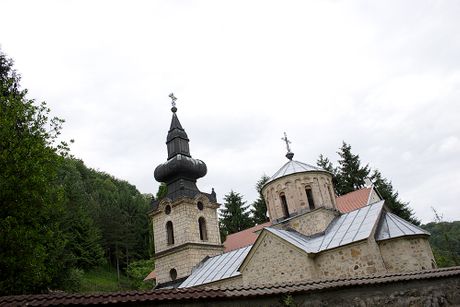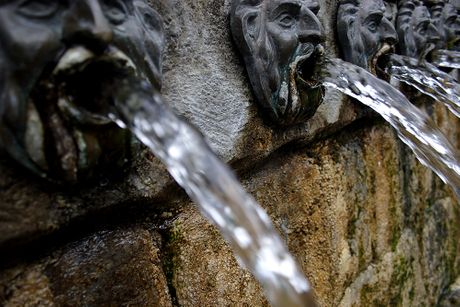At a place where 3 small rivers flow into one, a Serbian queen built a monastery: The legend of Tronosa

Tronosa Monastery is located in the village of Korenita, in the immediate vicinity of Trsic. This shrine has been declared a cultural monument of great importance in Serbia.
On the way to the monastery is the church of St. Pantelejmon with the Nine Jugovics ("Devet Jugovica") fountain, which was, according to legend, built by the old Jug Bogdan and the nine Jugovic brothers a year before leaving for the Battle of Kosovo. Hence the belief that the famous brothers are responsible for building Tronosa.

However, historical sources say otherwise. The founder of this monastery was Hungarian princess and later Serbian Queen Katalina Arpadovic, the wife of King Dragutin. The shrine is believed to have been built in the second half of the 13th century, just before the Battle of Kosovo, and two centuries later the Turks demolished it to its foundations. The monastery was rebuilt in the 16th century, and a church dedicated to the Presentation of the Holy Mother of God was built in 1559.
According to legend, Tronosa was named after three small rivers that flow into one near the monastery, and, according to locals, that water is healing. That was the reason why Serbian Queen Katalina erected a shrine in that spot.
The natural environment around Tronosa simply entices you to spend as much time as possible in this place.
If you have never visited Tronosa, it is recommended that you do so before the biggest Christian holiday of Easter, on Holy Thursday, when two farmer candles, each weighing 50 kilograms and two meters tall, "meet" at the fountain.
Namely, from Holy Tuesday to Holy Thursday, in the villages of Zajace, Paskovica and a part of Trsic, farmers make one candle, while farmers from Korenita and another part of Trsic make another. The "meeting" of the candles decorated with icons depicting Jesus Christ and the Mother of God, ivy and flowers, continues with a procession around the monastery, after which farmers bring the candles inside the church, where they are lit on all major Christian holidays, and on Sundays during liturgy.
The custom of making and lighting farmer candles dates back to the 19th century and is on the list of Serbia's intangible cultural heritage.
Photo: Ivan Strahinic
(Ona.rs)
Video: Izbio požar u porodičnoj kući u naselju mali mokri Lug. Sve vrvi od vatrogasaca.
Telegraf.rs zadržava sva prava nad sadržajem. Za preuzimanje sadržaja pogledajte uputstva na stranici Uslovi korišćenja.

